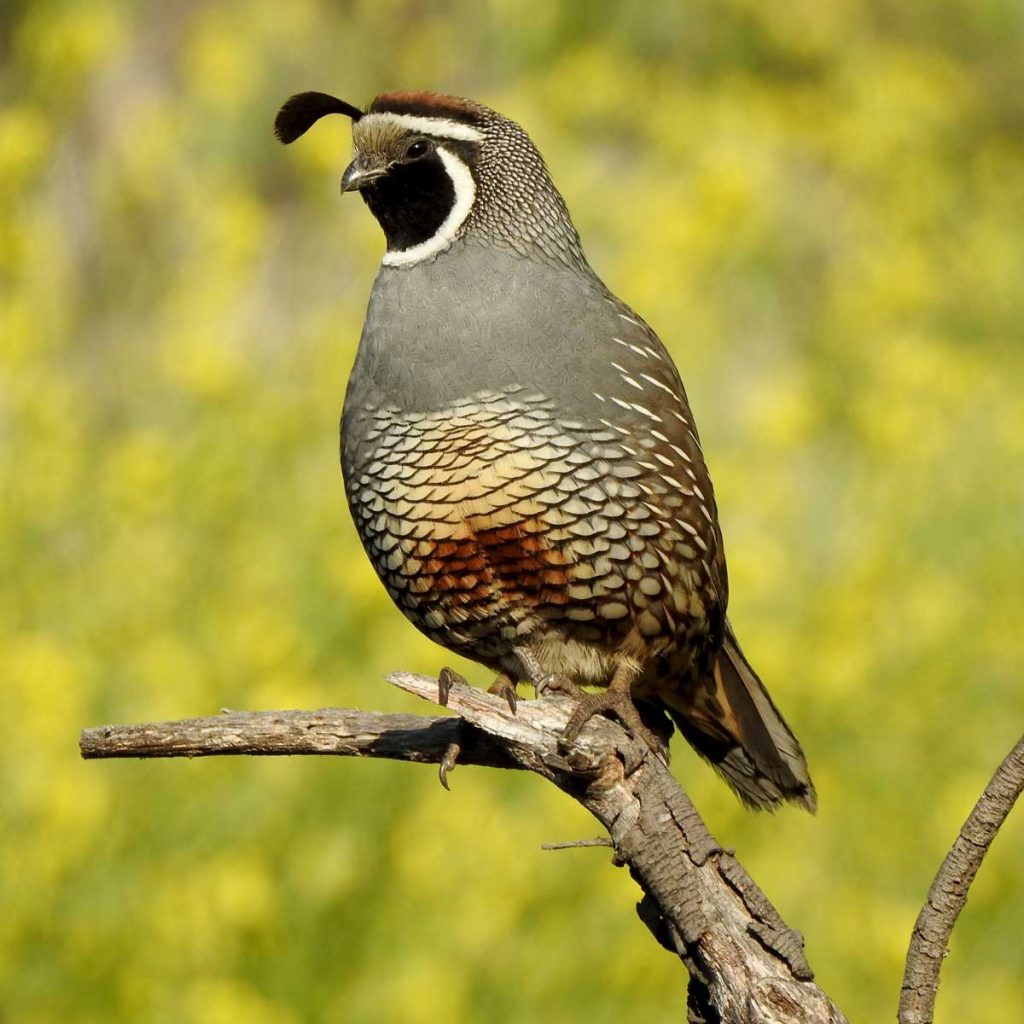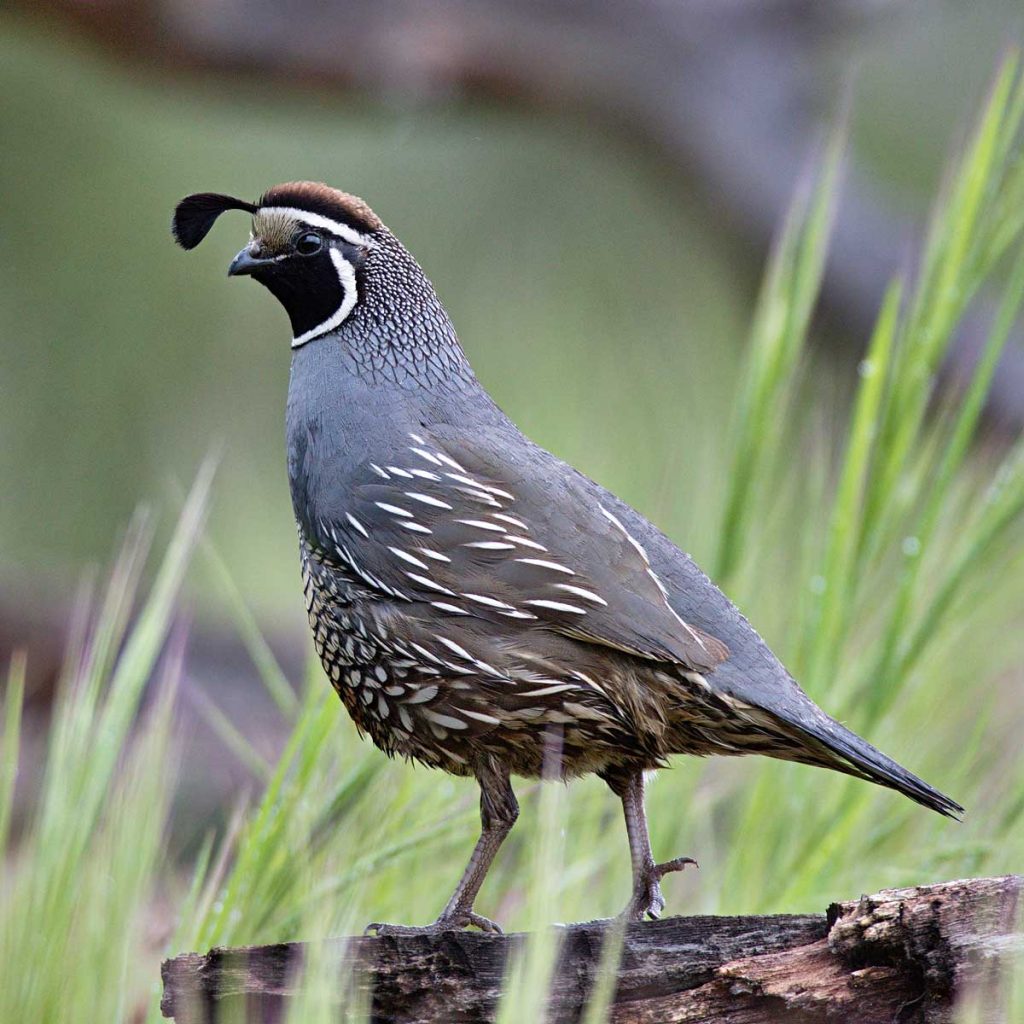
Birds / California Quail
Information for Juniors
California Quail
- Californian quail were introduced into Nelson in 1865
- Most commonly found in uncultivated scrubland near water
- A small plump game bird found in both islands
- The male has a striking black face bordered with white with a conspicuous plume on its head
- The female is smaller and duller in colour with a less obvious plume
- They are gregarious and live together in coveys of between 10 and 100
- The coveys break up into breeding pairs in late winter and the first eggs appear in late September
- You will probably see the parents herding their chicks in single file as they hunt for food
- The mother leads the chicks with dad as watchman at the back
- The nest is concealed in thick cover on the ground and up to 20 eggs may be laid
- The eggs are white with black/brown speckles
- After hatching the chicks are very active and are able to fly at three weeks


Information for Junior Secondary
California Quail
- The native NZ quail is considered extinct since 1870.
Californian quail were introduced into Nelson in 1865 - Most commonly found in uncultivated scrubland near water
- A small plump game bird found in both islands
- The male has a striking black face bordered with white with a conspicuous plume on its head
- The female is smaller and duller in colour with a less obvious plume
- They are gregarious and live together in coveys of between 10 and 100
- The coveys break up into breeding pairs in late winter and the first eggs appear in late September
- You will probably see the parents herding their chicks in single file as they hunt for food
- The mother leads the chicks with dad as watchman at the back
- The nest is concealed in thick cover on the ground and up to 20 eggs may be laid
- The eggs are white with black/brown speckles
- After hatching the chicks are very active and are able to fly at three weeks


Information for Senior Secondary
California Quail
- The native NZ quail is considered extinct since 1870
- Californian quail were introduced into Nelson in 1865
- Most commonly found in uncultivated scrubland near water
- A small plump game bird found in both islands
- The male has a striking black face bordered with white with a conspicuous plume on its head
- The female is smaller and duller in colour with a less obvious plume
- They are gregarious and live together in coveys of between 10 and 100
- The coveys break up into breeding pairs in late winter and the first eggs appear in late September
- Young quail love insects but as they get older they consume seeds, fruits and leaves. Morning is their feeding time
- You will probably see the parents herding their chicks in single file as they hunt for food
- The mother leads the chicks with dad as watchman at the back
- The male quail is aggressive an often fights other males, protecting their mate
- Courtship includes head dips, puffing up their feathers and spreading their tail feathers
- The nest is concealed in thick cover on the ground and up to 20 eggs may be laid
- The eggs are white with black/brown speckles
- After hatching the chicks are very active and are able to fly at three week


Activities
- Take a photograph clear enough to see the detail of the feathers
- Show me that you have studied how the feathers lie on the body, write a short description of the different types of feathers you see as best you can describe the colour, size, feather shape and how the feathers react with other feathers around them
